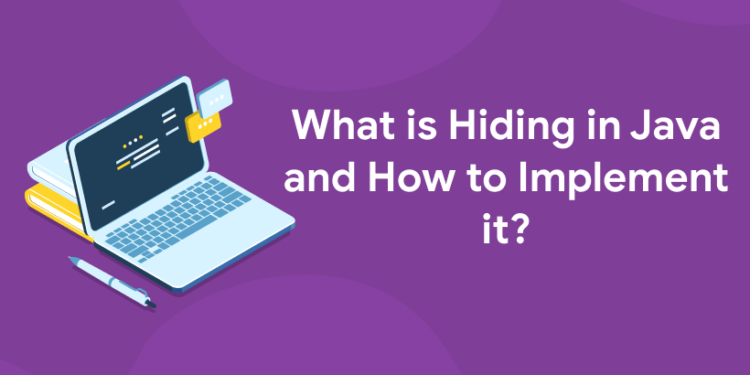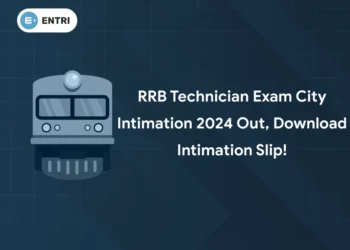Table of Contents
Java is one of the most popular programming languages today, and it’s also one of the most powerful and versatile. But if you’re just getting started as a Java developer, you may feel intimidated by the sheer volume of Java concepts, classes, methods, and other elements that make up this language. If you don’t have time to read about every feature of Java and learn about each one individually, take comfort in the fact that many great resources exist online to help you with this task. Java is one of the most popular programming languages in the world, and it’s not hard to see why. It allows developers to create software that can run on multiple platforms, including mobile devices, while still providing all the tools developers need to build powerful applications and services. Whether you’re just getting started with Java or you’ve been using it since before 1.0, there are always new features, quirks, and nuances to uncover. Here are just some of the best new features in Java 8 that every developer should know about.
Java is one of the most popular programming languages in the world, but it can be intimidating to newcomers and veterans alike. Java’s approach to object-oriented programming and its write once, run anywhere mentality might seem simple at first glance, but there are many hidden nuances that can trip up even the most experienced programmers who are not familiar with how Java does things (and why). When Java code uses the protected modifier to hide a class member from other classes in the same package, what actually happens? This Java tutorial explains how hiding works and shows you how to implement method hiding in java in your own Java programs. This article will use easy-to-understand code examples to show you how hiding works and how to implement it correctly in your own Java programs. Hiding or information hiding (also known as data abstraction, encapsulation, and module interaction in other programming languages) is a technique used in computer programming to reduce the amount of redundant code used by separate modules of code. It involves providing an interface that hides the details of one or more implementations from other code modules. This technique is frequently used in object-oriented programming, but can be applied in many other contexts as well; such as, procedural programming, software libraries, and spreadsheets.
To know more about java programming in the Entri app
What is Hiding?
In object-oriented programming, method hiding in java refers to one class or member variable of a class preventing access to another class or member variable with a different name. This is most often seen when inheriting from classes and needing control over how an inherited method behaves. Consider if you have a class Cat with a method for making noise and another for doing something cool like breathing fire: public void makeNoise() { … } public void breatheFire() { … } In order for you to extend the behavior of your own Dog subclass, you need control over which methods are available on your new type. The solution here is called hiding, which allows you to replace inherited methods so that they don’t appear as normal methods on your new type. For example, you could hide any methods not directly related to dogs by replacing them with empty bodies. For example: // dog code here public void breatheFire() { // do nothing! } Now that we’ve hidden away our Cat superclass’s implementation of breathing fire, we can implement our own version on top of it in our Dog class. As an added bonus, hiding is also a great way to prevent people from calling potentially dangerous functions without proper input validation. It’s easy enough to hide all potential bugs out of sight until someone tries to call them!
Enroll in our latest java programming course in the Entri app
How to Implement method
1: What is the default value of a boolean in Java?
Hiding, also known as encapsulation, is the concept of preventing certain parts of an object from being accessed directly by other objects in the program. The most common place you will see hiding used in Java code is with Java classes, where certain fields and methods are marked as private. While method hiding in java may seem like it could be very limiting for the reusability and modifiability of your code, it can actually have huge benefits, especially when you learn to use the idea properly!
Get the latest updates on java programming in the Entri app
How to Implement the method hiding in Java using interfaces?
In java a class can hide another class by implementing it. This means that instead of deriving from another class, you implement its behaviour in your own class. In such case it is called hiding. If a derived class hides an implementation then it is known as runtime binding and if a base class hides an implementation then it is known as compile time binding. Here we will show how to do both types of method hiding in java using interfaces. For example, Lets consider following two classes BaseClass and DerivedClass which are inherited form superclass SuperClass . Now suppose we want to change interface of SuperClass at runtime so that all derived classes implements new interface instead of old one. We can achieve it using Interface hiding technique as shown below: Here, NewInterface is new interface with same methods like OldInterface but with different names for some methods. So when OldInterface hides NewInterface at run time then all objects created from OldInterface will behave as if they were created from NewInterface because they have same method signatures except for some minor changes in their names. Similarly when BaseClass implements NewBaseClass at compile time then all objects created from BaseClass will behave as if they were created from NewBaseClass because they have same method signatures except for some minor changes in their names. However there are few restrictions on interface hiding.
Get the latest updates on java programming in the Entri app
Arrays and Ranges
Arrays are useful when you want to use one variable to store multiple values. There are two types of arrays: static and dynamic. Static arrays are declared with a set size at compile-time, while dynamic arrays can be resized during runtime. In addition, java includes an interface called RandomAccess that enables you to use integers as indices (very similar to how we use strings). So instead of writing ArrayList mylist = new ArrayList(); we could write RandomAccess mylist = new RandomAccess(); Ranges allow us see all or a portion of a collection using just one line of code. For example, if I wanted to print out every element in a list from index 5 through 10, I would simply say System.out.println(mylist[5..10]); This is much more compact than calling get(index) on each item individually! However, ranges have some limitations; for example they cannot be used with associative arrays.
Enroll in our latest java programming course inthe Entri app
For loops, while loops, and do-while loops
What are these for anyway? Every language has a few different kinds of loops, with names like for, while, and do-while. This chapter will cover these constructs and explain when to use them. The main takeaway here: don’t worry about memorizing a list of rules; just follow a few simple guidelines like loop until you get a result or repeat until something else happens. You’ll save yourself headaches! And we’ve all had enough of those already. It turns out that programming languages are much more logical than they seem at first glance. Most (all?) have built-in structures called control flow statements that let us execute code conditionally or repeatedly. These include if/else statements, switch statements, and loops such as for/while/do-while. They’re important because they’re what make our programs move from one line of code to another—if we didn’t have control flow statements, our programs would be stuck on whatever line they started on forever! (Or at least until we hit an error.) In most cases, there are lots of ways to accomplish something—that’s what makes programming fun! However, there are some common patterns that developers tend to fall into again and again over time.
Get free placement assistance with the Entri app
Numbers and characters
Integer and float can be used for almost anything. They’re so versatile that they’re virtually untyped, which means they don’t know what they are – they only know how to do stuff. For example, you can add two integers together, even though one might be a character and another might be a byte or short. Why would you want that behavior? That depends on your use case. Often times it makes sense, but sometimes people aren’t aware that adding two ints together when one of them could be a character will end up throwing an exception at runtime due to integer promotion rules. If you’re not familiar with those, read about them here . In any case, if you have a character type (e.g., char), then stick with using chars where possible; otherwise use either ints or floats depending on whether accuracy matters more than space savings. As far as characters go, there are lots of different kinds: single-byte characters (e.g., ‘A’), double-byte characters (e.g., ‘\u0041’), Unicode characters (e.g., \u00C0), escape sequences (e.g.,
Enumerations, text, classes, methods
There are many different types of entities that you can use and some have similar functions. Enumerations, Classes, Methods and Texts can all be used when you need to define something and even though they seem simple enough, you can still run into problems if you don’t know how these work or use them correctly. This chapter will cover all four topics and talk about why they should be used or not. Even though some look like they are interchangeable, each type has its own purpose and rules that govern their usage. Knowing which one to use is key to avoiding errors in your code. With enumerations, there are three things that you should know: When you should use them; what type of values they support; and what keywords you can use with them. If a variable is only going to contain one value throughout its life cycle then it might make sense for it to be an enumeration instead of a number or string since it would give it more flexibility later on down the road.
Exceptions, arrays and files
I am still learning how to use exceptions, arrays and files. Exceptions are what occurs when a mistake happens inside my code. This can be when I divide by zero or access a file that doesn’t exist. I will cover what type of exceptions there are and how I can implement them into my program. Arrays, on the other hand, are fixed-size sequences (sequences are lists) that I can store data into as long as it matches its type i.e. storing a String into an array with integers. The last thing I want to talk about is files. Files allow me to interact with external devices such as hard drives, USBs, and SD cards. You should always check if your device exists before accessing it because if you try accessing something that doesn’t exist then you’ll get an exception!
Multithreading with threads
Multithreading refers to creating multiple threads that do work concurrently. Multithreading can be done with a single processor computer, but it’s generally more effective with a multi-core CPU. Multithreading lets you take advantage of natural shifts in user attention on devices like smartphones and tablets. For example, if your app creates two threads for downloading content and displaying it, you can download content when a user isn’t using your app and display it when he or she wants it. Additionally, there are many tasks that simply take too long to finish if they run one after another; data access through API calls or reading files from disk are examples of these kinds of activities—you can make them faster by splitting them into separate threads (or processes). Finally, multithreading is key to building responsive apps that don’t freeze up when performing an intensive task. You may have noticed some apps pause while they load a large amount of data, switch between tabs in your browser, or upload large amounts of information; multithreading can help prevent these types of slowdowns by performing heavy lifting while other parts of your app remain responsive.
Collections (lists, sets and maps)
To start, we’ll look at collections. Collections are a major focus for Java developers, especially when it comes to core features like code reusability and program design. The difference between an array and a collection should be clear—Java arrays can hold only one type of data per index, while collections can hold multiple objects. For example, let’s take a look at some really simple java definitions: Array—An object that represents a fixed-sized (and potentially heterogeneous) list of values from some domain. Unlike lists, arrays are tightly-coupled with objects. Collection—A class or interface that provides a standard set of operations on its elements. Like lists, sets and maps, collections are more flexible than arrays because they aren’t tied to any particular object type. Let’s now examine how you might use these two types of containers in your programs!
The first thing you need to know about using Java collections is that they’re all implemented as interfaces rather than classes.
Get the latest updates on java programming in the Entri app
Regular expressions
In computing, a regular expression (often shortened to regex or regexp) is a sequence of characters that define a search pattern. Usually such patterns are used by string editors for search and replace operations. The concept arose in 1955, when Ken Thompson wrote an implementation for a programming language called QED; he later implemented regular expressions for early Unix. [4] During Thompson’s time at Bell Labs, he reimplemented regular expressions for one on IBM’s first mainframe computers, as one element of his general text-processing package. This version was soon adopted by other researchers and eventually led to modern implementations of regular expressions. Regular expressions became widespread with their use in Unix text processing utilities, from which they spread into applications including email clients and word processors. Today almost all modern programming languages support regular expressions.[5] Most allow alternatives to traditional forward matching (wherein a match can occur only at the beginning of input), using various syntaxes designed for backwards compatibility with Perl 5.[6][7][8][9]
Enroll in our latest java programming course inthe Entri app
How to use method overloading in java
Overloading means writing a method or constructor with identical signatures. In C++ and other languages, one can overload functions by having them take different numbers or types of arguments. This doesn’t work that way in Java. Instead, if you have more than one function with identical signatures (name and parameter list), then it’s considered overloading. You can use overloaded methods when you want to provide several implementations for a single method name but don’t want to change its name. The compiler will select which implementation to call based on how many parameters are used in each version of the method. You might also use overloaded methods when defining generic classes so that they can be used with any type. If two versions of an overloaded method differ only by their return type, then they are said to be covariant; otherwise, they are contravariant. To create an overloaded method, simply declare another method with exactly the same signature as an existing one.
Enroll in our latest java programming course in the Entri app
Problems with Overriding and Hiding
In a nutshell, using inheritance can lead to confusion about which member function does what, and it also violates one of object-oriented programming’s most basic tenets—the open/closed principle. When you use inheritance to give a new class access to an old class’s members, you are effectively closing those members; i.e., they can no longer be extended by other classes. This is true even if your overriding function doesn’t do anything different from its base function or never uses its base-class implementation: If it calls or overrides any other functions that are closed, it becomes infected with that closure and must behave accordingly. For example, suppose we have two classes called C1 and C2. C1 has three public methods: m1(), m2(), and m3(). It also has a protected method called m4(). Now suppose we derive another class called C3 from C1. We want to override all three of C1’s public methods but leave m4() alone because it needs to remain protected. That’s fine, but when we go to implement our own versions of these functions, what happens? Well, m1() is easy enough: All we need to do is write our own version and call super.m1(). But what about m2()? The problem here is that since C3 derives from C1, it gains access not only to all of C1’s public methods (including m2()) but also to all of its protected ones as well! So if we try calling super.m2(), will it work?
Conclusion
The golden rule of OOP is reuse. A program written with high cohesion and low coupling, makes it easier for others to reuse your code. One way of doing so is by applying object hiding. With object hiding, we hide an object’s internal data from external classes or methods. This allows us to create a class that does not allow other classes or methods access to its internal implementation details, but still allows them access to its public interface. An example of implementing method would be creating a service that calculates distances between geographic locations (latitude and longitude), but does not expose how you calculate those distances through its public interface. It also provides a method to get directions from one location to another using these calculated distances. That method can use any algorithm it wants internally as long as it uses one that gives correct results when given two sets of latitude and longitude coordinates. When someone calls our distance calculator with two sets of coordinates, they don’t care what algorithm we use inside our service to get their result because they are only interested in what they see on their screen: It will take approximately 6 hours and 35 minutes to drive 865 miles. They don’t need to know how we got there; they just want results. In fact, if someone wanted more accurate results than our current algorithm provides, they could provide more accurate data points themselves instead of asking us for better algorithms. If you are interested to learn new coding skills, the Entri app will help you to acquire them very easily. Entri app is following a structural study plan so that the students can learn very easily. If you don’t have a coding background, it won’t be any problem. You can download the Entri app from the google play store and enroll in your favorite course.
Enroll in our latest java programming course inthe Entri app











